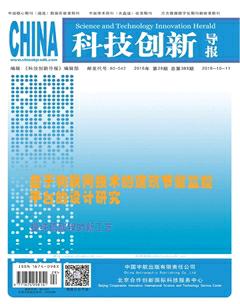鋼鐵流程系統的能耗排放特征及其廣義熱力學優化
陳林根++馮妍卉++姜澤毅++謝志輝++魏曙寰
摘 要:鋼鐵生產流程能源配置技術落后、集成度低。為在整體上實現鋼鐵生產流程的節能減排,該研究圍繞解決對應的關鍵科學問題“鋼鐵生產流程物流—能流—環境作用機理及其多目標集成優化理論”,在工序模塊、單體組件和功能子系統層面開展了前期研究,為實現全流程仿真和優化奠定了基礎。主要包括:(1)提出絕熱過程火積耗散極值原理,對等溫和對流輻射傳熱邊界條件下6種不同形狀的加熱爐絕熱層進行構形優化,得到整體絕熱性能最優的絕熱層構形。(2)提出“廣義構形優化”理論,將火積理論引入板坯連鑄凝固傳熱過程的研究中,分別考慮熱損失率和火積耗散率目標,得到同時兼顧板坯內部溫度梯度和表面溫度梯度的二冷區水量分配最優構形。(3)運用系統動力學原理,構建燒結、煉鐵工序的鐵素流動態模型,獲得不同返回物質流情況下的鐵素流整體宏觀動態特性。(4)基于“運動參考坐標系”,建立燒結礦冷卻過程二維非穩態連續模型,獲得相應的流場、壓力場、溫度場特性。(5)基于非線性規劃理論建立高爐煉鐵過程優化模型,分別以爐腹煤氣量指數相關聯的高爐利用系數和碳排放為優化目標,研究爐腹煤氣量指數等參數和高爐噴吹煤粉、噴吹塑料對優化結果的影響。(6)建立中厚鋼板軋后冷卻過程數學模型,明晰設計參數和冷卻方式對鋼板表面和終冷溫度的影響。(7)構建以火用為表征參數的特征化模型,以高爐-轉爐煉鋼、電爐煉鋼過程為例,分析鋼鐵生產流程資源和能源交互作用的耦合關系。(8)建立鋼鐵生產流程分析模型,計算典型鋼鐵企業碳、氮、硫等元素向多形態廢棄物轉換及排放的數量和結構。計算鋼鐵生產過程的環境負荷數據,得到我國典型鋼鐵生產過程資源、能源消耗和CO2、SO2、NOx、CO、CH4等排放清單。(9)運用各層次單元之間的物流、能流關系及流程網絡重構技術,開發工序能質平衡計算與流程仿真軟件。(10)構建具體到工序層次的鋼鐵生產、加工和消費的全生命周期物質流模型,分析不同情景下中國廢鋼增長趨勢對鋼鐵流程的結構演變及其能耗和排放的影響。(11)研究鑄軋區段生產組織及鋼坯熱送熱裝等流程節能技術,提出節能技術優化組合概念,探討關鍵技術之間的關聯關系和優化組合模式。(12)建立12種鋼廠余能余熱驅動簡單和復雜、閉式和開式燃氣輪機動力裝置、熱電聯產裝置和熱電冷聯產裝置的經典熱力學和有限時間熱力學模型并進行性能分析和優化;建立兩種鋼廠低溫余熱驅動半導體熱電發電機模型并進行數值模擬。明晰各系統的熱力學整體特性及基本優化關系,獲得各個工序余能余熱驅動熱力過程和循環的最佳設計方案。
關鍵詞:鋼鐵生產流程 物質流 能量流 節能減排 計算機仿真 整體特性 廣義熱力學優化
Energy Consumption, Emission Characteristics and Generalized Thermodynamic Optimization of Iron & Steel Process Systems
Chen Lingen1 Feng Yanhui2 Jiang Zeyi2 Xie Zhihui1 Wei Shuhuan1
(1.Naval University of Engineering,PLA; 2.University of Science & Technology Beijing,USTB)
Abstract:In order to achieve the overall objective of energy conservation and emission reduction of iron and steel production process, this subject focused on the key scientific problem of “the action mechanism among material flow, energy flow and environment and the corresponding multi-objective integration optimization theory in iron and steel production process” and performed preliminary study as follows: (1)The entransy dissipation extremum principle for thermal insulation process is proposed and applied into the constructal optimizations for insulation layers of reheating furnace wall. (2)The theory of generalized constructal optimization is proposed and applied to search the optimal water flow distributions of secondary cooling zone for slab continuous casting. (3)The system dynamic models for iron-flow of sintering and ironmaking are established and the overall macroscopic dynamic characteristics of iron-flow are obtained. (4)The gas flow, pressure and temperature fields of the sinter ore cooling process are obtained based on a 2D transient consecutive model. (5)The optimizations of blast furnace ironmaking process are performed with blast furnace utilization coefficient and carbon emission as objectives. (6)The effects of design parameters and cooling methods on surface temperature and final cooling temperature are analyzed for cooling process after plate rolling. (7)The coupling relationship of the interaction between the resources and energy of iron and steel production process is analyzed based on an exergy characterized model. (8)The quantity and structure of the conversion and emissions to polymorphic waste of carbon, nitrogen, sulfur and other elements in typical companies are calculated based on the analysis model for iron and steel production process. (9)The software package for energy and material balance and process simulation are developed. (10)The effects of the growth trends of steel scrap on routes evolution, energy consumption and emissions of the production process are analyzed based on the material flow model for entire iron and steel life-cycle. (11)The concept of optimal combination of energy-saving technologies is proposed and the correlation and optimal combination mode among key technologies are discussed. (12)The performance analyses and optimizations for 14 classical and finite time thermodynamic models of energy conversion processes and cycles driven by residual energy in iron and steel plants have been performed.
Key Words:Iron and steel production process; Material flow; Energy flow; Energy conservation and emission reduction; Computer simulation; Golable characteristics; Generalized thermodynamics optimization

